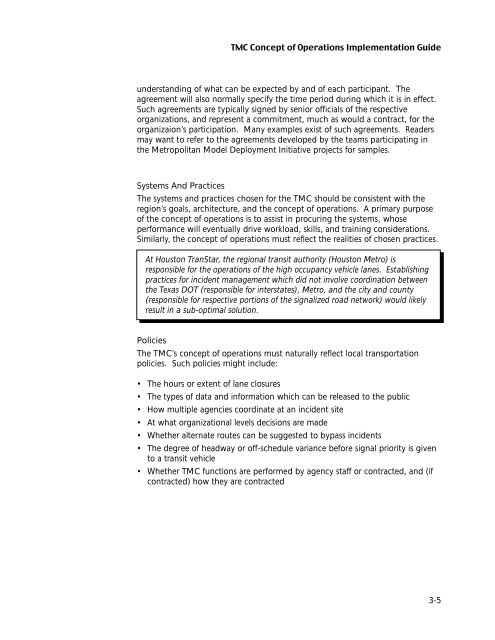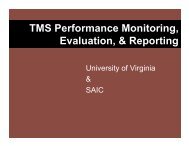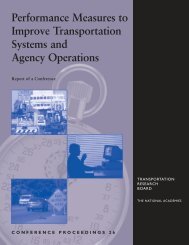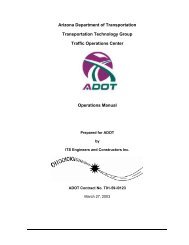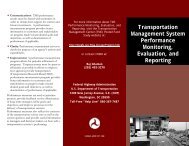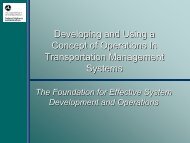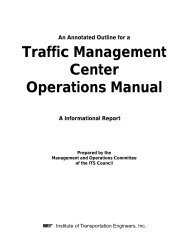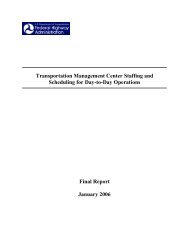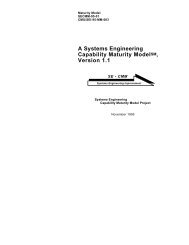Transportation Management Center Concepts of Operations
Transportation Management Center Concepts of Operations
Transportation Management Center Concepts of Operations
- No tags were found...
You also want an ePaper? Increase the reach of your titles
YUMPU automatically turns print PDFs into web optimized ePapers that Google loves.
understanding <strong>of</strong> what can be expected by and <strong>of</strong> each participant. Theagreement will also normally specify the time period during which it is in effect.Such agreements are typically signed by senior <strong>of</strong>ficials <strong>of</strong> the respectiveorganizations, and represent a commitment, much as would a contract, for theorganizaion’s participation. Many examples exist <strong>of</strong> such agreements. Readersmay want to refer to the agreements developed by the teams participating inthe Metropolitan Model Deployment Initiative projects for samples.Systems And PracticesThe systems and practices chosen for the TMC should be consistent with theregion’s goals, architecture, and the concept <strong>of</strong> operations. A primary purpose<strong>of</strong> the concept <strong>of</strong> operations is to assist in procuring the systems, whoseperformance will eventually drive workload, skills, and training considerations.Similarly, the concept <strong>of</strong> operations must reflect the realities <strong>of</strong> chosen practices.At Houston TranStar, the regional transit authority (Houston Metro) isresponsible for the operations <strong>of</strong> the high occupancy vehicle lanes. Establishingpractices for incident management which did not involve coordination betweenthe Texas DOT (responsible for interstates), Metro, and the city and county(responsible for respective portions <strong>of</strong> the signalized road network) would likelyresult in a sub-optimal solution.PoliciesThe TMC’s concept <strong>of</strong> operations must naturally reflect local transportationpolicies. Such policies might include:• The hours or extent <strong>of</strong> lane closures• The types <strong>of</strong> data and information which can be released to the public• How multiple agencies coordinate at an incident site• At what organizational levels decisions are made• Whether alternate routes can be suggested to bypass incidents• The degree <strong>of</strong> headway or <strong>of</strong>f-schedule variance before signal priority is givento a transit vehicle• Whether TMC functions are performed by agency staff or contracted, and (ifcontracted) how they are contracted3-5


